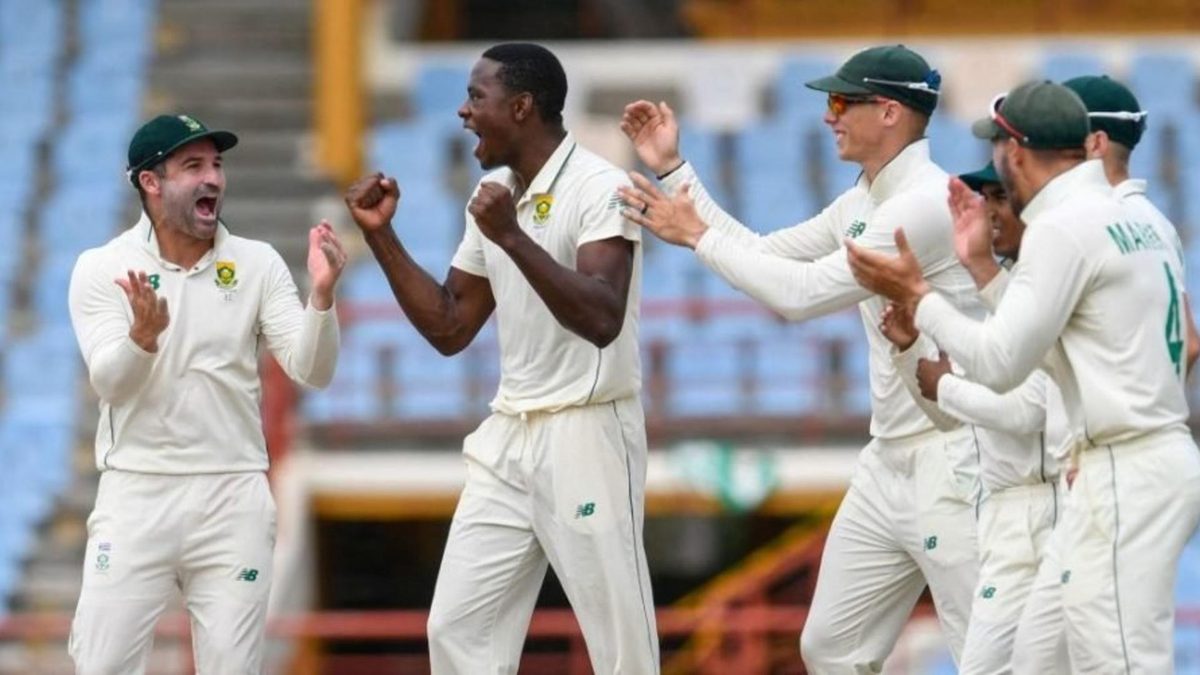
Anrich Nortje might be missing, but South Africa’s pace attack remains hugely challenging for India’s inconsistent batting line-up, writes Rohit Sankar.
These are complicated times for South Cricket. The mixed reactions to the SJN Hearings, the shadow of doubt cast upon the head coach and the Director of CSA, and the hue and outcry over “taking a knee” during the T20 World Cup are just some of the many issues haunting the team off the field.
On the field too, it’s been far from rosy. Since 2018, the team has seen several high-profile retirements in addition to the player exodus. A change in captaincy, a near-overhaul of the entire middle order, and more confusion around the all-rounder slot at No.7 have affected team balance and it shows in the results.
Since 2019, South Africa have lost four and won three Test series. On paper, that’s decent for a side that finished No.5 on the points table of the first World Test Championship cycle. But, delve deeper and two losses would haunt them badly: the Test series lost to Sri Lanka at home in early 2019 (although they sort of compensated with a couple of thumping wins against the team in 2020/21) and the 1-3 drubbing at the hands of England, at home again.
For a side that had lost home Test series’ to only Australia and England till then, the 0-2 loss to Sri Lanka was a massive reality check. It flared up the issues that were simmering on or around the surface for a while: the succession plan to AB de Villiers, the frailties of the top order and the over-dependence on Kagiso Rabada.
The last of those has massively reduced in the last two years with the emergence of Anrich Nortje, the slow, but steady rise of Lungi Ngidi, and the seamless elevation of domestic quicks to international cricket. The on and off breakthrough performances from bowlers walking in and out of the squad helped too. Rabada’s honeymoon period in whites has worn off and the effects of bowling him to the ground in the first few years are showing already.
While Rabada and Nortje remain at the top of the wickets chart in Tests since 2019 for South Africa, the likes of Ngidi, Duanne Olivier (before he took the Kolpak), Lutho Sipamla, Beuran Hendricks, and Wiaan Mulder have stepped up on different occasions.
Even with Nortje ruled out of the entire series, South Africa’s pace stocks appear replete with options this time. Rabada showed signs of returning to his best in the last series against West Indies. The Ngidi vs Olivier debate is non-existent now with Nortje ruled out and both have a strong case to make it to the final XI.
Olivier is the top wicket-taker in the four-day domestic competition this season with 28 wickets at a stunning average of 11.14. Having plied his trade in England for three seasons, Olivier has a better understanding of his skillsets and is no longer a one-trick pony with him speaking multiple times in the last few weeks about his ability to bowl fuller now.
Ngidi, on the other hand, is injury-free now and has had some time off to get to peak fitness. He has played four Tests in 2021, and has looked a different bowler already: 14 wickets in these Tests, only one of which came at home, at an average of 19.14 is a reflection of his ability to turn up in this format. He will also look back to the series against India in 2018, where he finished with nine wickets at an average of 17.2 in two Tests, including a six-fer in Centurion, the venue of the first Test.
Keshav Maharaj could play as the lone spinner, but if South Africa do decide to go all-pace, they have more options up their sleeve with as many as four seamers on the bench: Glenton Stuurman, Beuran Hendricks, Marco Jansen, and Sisanda Magala. This is aside from Wiaan Mulder, who will likely slot in at No.7 as the all-rounder and extra pace bowler.
Stuurman and Jansen are likely to vie for the fourth seamer’s slot should South Africa go all-pace at any stage in the series. With Philander-like accuracy and lethal returns in first-class cricket, Stuurman presents a solid case, but so does Jansen, who is a left-arm quick, nearly seven feet tall, and impressed Kohli way back in 2018 as a net bowler.
The absence of Rohit Sharma and Shubman Gill at the top make India’s top three vulnerable, especially with Cheteshwar Pujara’s best version no longer making frequent appearances. The same goes with Virat Kohli and Ajinkya Rahane, both of whom are under fire for their form.
As much as this tour presents India their best chance to win a Test series in South Africa – the absence of Nortje in the series and Quinton de Kock for the first couple of Tests makes it even more so – South Africa’s pace attack against this Indian batting line-up still remains a lopsided battle. Don’t let the Test team rankings, India’s impressive pace bowling group, and South Africa’s own fragility with the bat fool you into believing Rabada, Ngidi, and Olivier aren’t capable of winning this for the Proteas.








